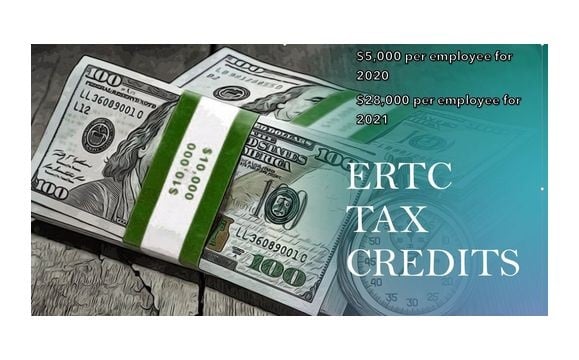How To Buy Rental Property To Reits And More Is Listed Here
There are actually many buy apartment in downtown options for where to put your loan while looking for asset alternatives. Whatever level of experience you have, investing in stocks, bonds, exchange-traded funds, stock funds, and real estate are all sensible choices; for novice investors, cryptocurrency or foreign exchange may be too unstable. Which option you choose will depend on how invested you want to be in your assets, how much money you need to start putting in, and how much risk you are willing to take.
Real estate ownership is an asset strategy that can be profitable and gratifying. Potential real estate investors have an advantage over share and connection investors in that they can purchase a home by paying for a portion of the total cost up front and then paying the balance plus interest over time.
What attributes do a good real estate asset have? If you can’t readily manage to lose that kind of money, you shouldn’t invest in real estate or any other type of financial investment.
In order to qualify for a regular home loan, a 20% to 25% down payment is typically required. However, in some cases, only a 5% down payment is necessary to purchase the entire property. Property owners and investors alike are motivated by the chance to own the asset as soon as the paperwork is approved and can, in turn, use their homes as collateral for loans to buy down payments for other properties. Here are the top 5 ways investors can profit from real estate.
Rental Residences
For those with DIY renovation skills and the will to deal with tenants, owning rental properties might be an excellent opportunity. The upfront maintenance charges and unused months for this strategy do require a considerable sum of money.
New home sales prices, a reliable indicator of real estate market values, continued to rise from the 1960s until 2007 before declining during the financial crisis, according to data from the U.S. Census Bureau.
“New Residential Sales,” US Census Bureau. Save the document “Average and typical Sale Price of Houses Sold.”
Prices then started to rise again, even surpassing pre-crisis levels.
The long-term effects of the coronavirus pandemic on real estate values are still being investigated.
Flipping Houses
People with significant experience in real estate appraisal, renovation, and marketing should turn houses. Flipping houses requires money and the ability to do or oversee repairs as necessary.
This is the so-called “crazy edge” of real estate transactions. Real estate flippers are unique from buy-and-rent property owners, much as time investing differs from buy-and-hold investors. Real estate investors that flip properties frequently aim to sell the undervalued buildings they buy in less than six months.
Typical of pure property flippers is a lack of investment in building upgrades. The investment must already have the value required to generate revenue without any adjustments, or they will withdraw the property from consideration.
Flippers who are unable to quickly sell a home may find themselves in this situation since they frequently do not keep enough cash on hand to pay the mortgage on a residential property over the long term. This may lead to additional, snowballing decreases.
Another type of financier buys moderately priced houses and adds value to them all through renovations to make money. In a longer-term investment like this, investors might only be able to take on one or two houses at a time.
Real Estate Investment Organizations
The greatest real estate investment groups (REIGs) are for people who want to own rental property but don’t want to deal with the management issues. Access to financing and a financial reserve are necessary for buying REIGs.
REIGs are modest stock funds that make investments in residential real estate.
In a conventional real estate investment team, a company acquires or even creates a collection of apartment buildings or even condominiums, then makes it feasible for financiers to purchase them through the company and join the team.
A single investor may own one or more self-supporting housing systems, but the provider managing the investment team as a whole controls each system, taking care of maintenance, advertising and marketing vacancies, and also communicating with tenants. The organization receives a percentage of the regular monthly rental price in return for performing these control jobs.
The investor’s title has a common real estate investment group contract, and all of the tools pool a portion of the rent to protect against sporadic vacancies. As a result, even if your device is genuinely empty, you will still receive some payment. There should be enough to cover expenses, provided that the vacancy charge for the combined apartments does not increase much.
Investment Trusts In Real Estate
For clients who genuinely want collection exposure to real estate without a conventional real estate transaction, a property investment company (REIT) is best.
An organization (or trust) creates a REIT when it invests investor money in the acquisition and management of rental properties. In reality, REITs are purchased and traded on the major exchanges just like any other supply.
To maintain its REIT designation, a firm must distribute 90% of its own taxed revenue as incentives. By doing this, REITs avoid paying corporate income tax, as opposed to a regular firm, which would be taxed on its own sales and then would have to decide whether to distribute its own after-tax profits as dividends.
For stock market investors who desire consistent income, REITs are a good financial investment, just like normal dividend-paying stocks. Compared to the aforementioned types of real estate investment, REITs give clients access to non-residential investments like malls or office buildings, which are typically not feasible for particular business owners to acquire directly.
Because they are exchange-traded trusts, REITs are actually very liquefied. In other words, you don’t need a real estate agent or a label transfer to assist you lose your money. A more organized version of a real estate financial investment team is a virtual REIT.
Investors should distinguish between capital REITs that own properties and mortgage REITs that provide loans for real estate as well as play around with mortgage-backed securities (MBS) while looking for REITs. Despite the fact that both promote realty visibility, the attribute of the visibility is fundamentally distinct. While home loan REITs focus on the profits from real estate mortgage loan funding, a capital REIT is more traditional in that it represents real estate ownership.
Regardless of your level of expertise, shares, bonds, exchange-traded funds, mutual funds, and real estate are all excellent investments; however, for novice investors, foreign exchange or cryptocurrencies may be too unpredictable. If you cannot afford to lose that amount of money, you should not invest it in real estate or any other sort of investment.
A typical real estate investment team lease is in the owner’s name, and all of the systems combine a portion of the rental payment to secure against recurring openings. In terms of methodology, REITs are a more specialized kind of the real estate financial investment group.
In that it represents ownership on a concrete level, an equity REIT is more usual than a mortgage REIT, which focuses on the revenue from real estate mortgage loan funding.


